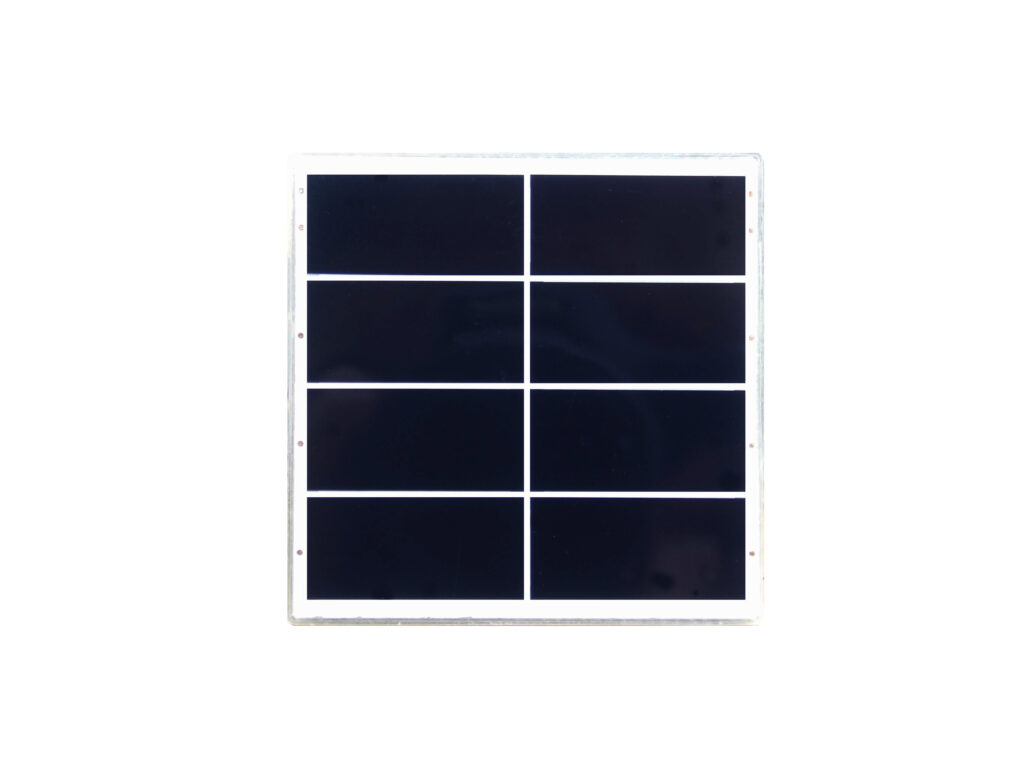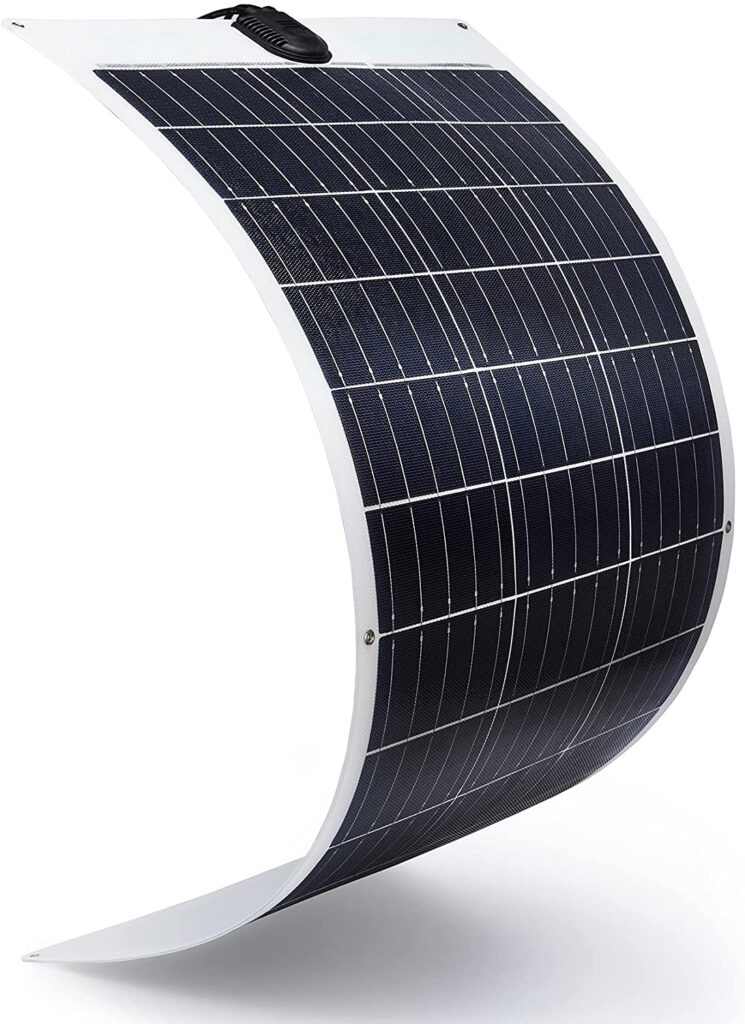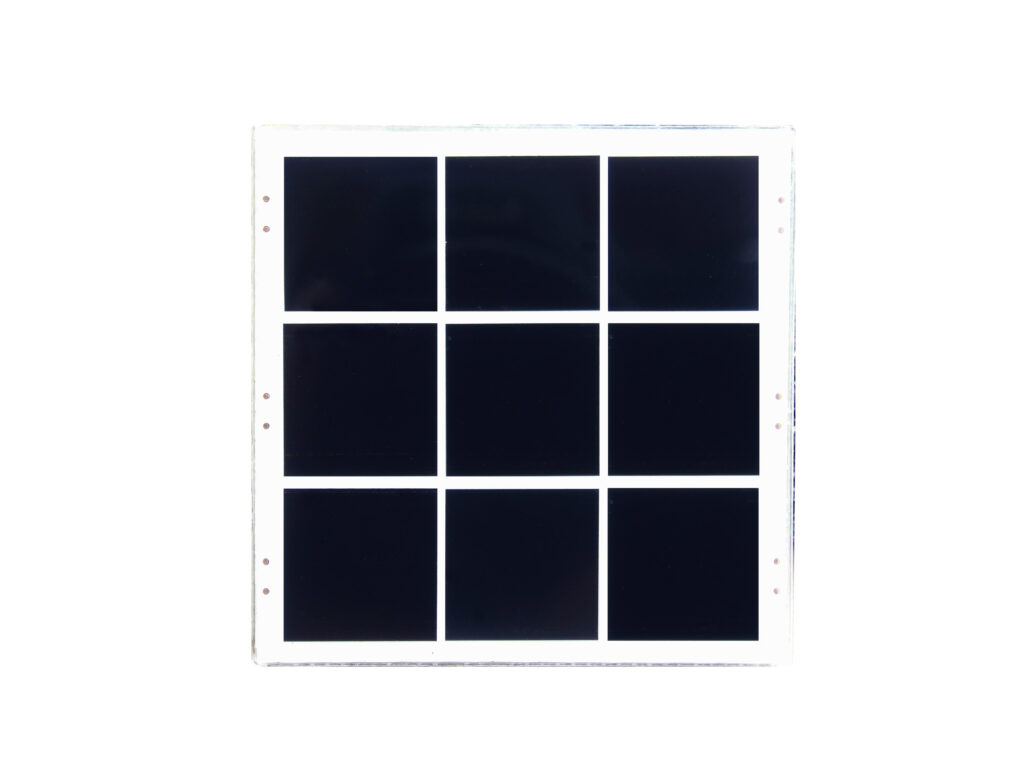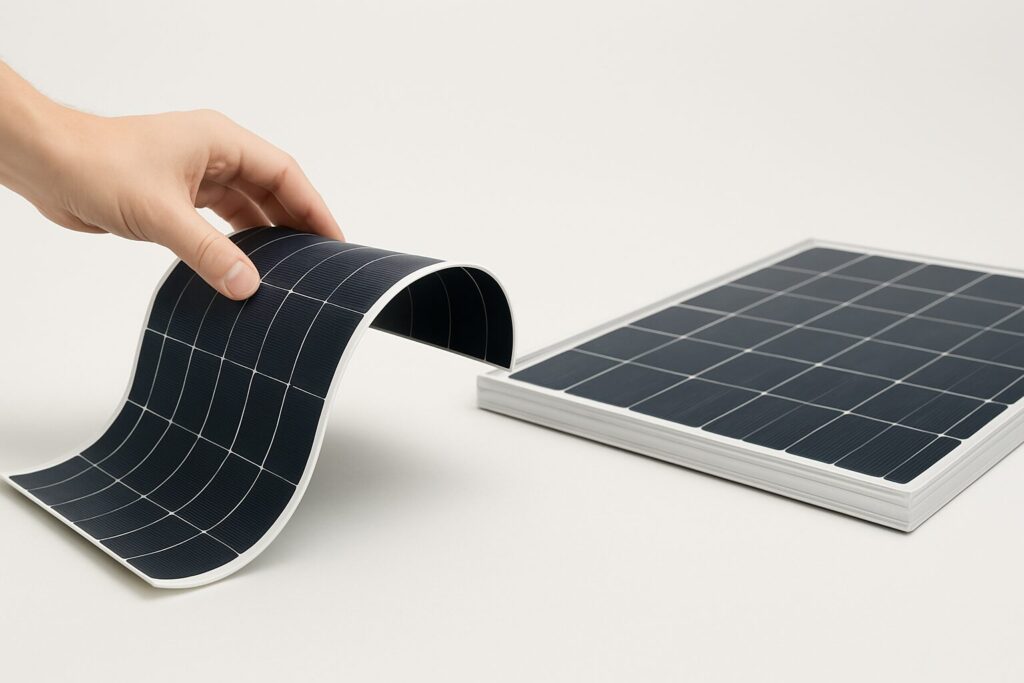Deciding whether to choose flexible solar panels vs rigid solar panels depends on your needs. Flexible panels are great for portability and curved surfaces, while rigid panels offer better efficiency and durability. In this article, we compare the pros, cons, and uses of each in the context of flexible solar panels vs rigid solar panels to help you make the best choice.
Key Takeaways
- Flexible solar panels offer portability and adaptability, making them ideal for mobile applications, while rigid panels provide high efficiency and durability suited for permanent installations.
- Choosing between flexible and rigid solar panels requires evaluating energy needs, installation environments, and budget considerations to optimize your solar investment.
- Hybrid systems combining both types of panels can maximize power production and efficiency by leveraging the unique strengths of flexible and rigid panels in various scenarios.
1.Understanding Flexible Solar Panels

Flexible solar panels are transforming the way we capture solar power. Tailored for flexibility and convenience, these portable solar panels excel in mobile situations such as recreational vehicles, boats, and camping equipment where rigid panels are not suitable. Their lightweight nature allows for straightforward installation, and they can adapt to a range of surfaces. This makes them ideal for unique structures and areas that are off the grid.
When selecting appropriate solar panels, it’s important to consider their intended use because flexible and traditional rigid panels each serve distinct purposes.
Composition and Technology
Ultra-thin silicon cells, encased between layers of protective plastic, give flexible solar panels their lightweight and pliant characteristics. Cutting-edge versions utilize organic solar cells with graphene electrodes to improve flexibility and minimize the potential for damage. For thin film solar implementations that require both efficiency and a bendable form factor, monocrystalline cells are frequently chosen due to their noted high-efficiency levels.
The interconnection of these slender silicon cells is achieved through the use of conductive ribbons that boost performance. This sophisticated approach in solar technology ensures that the panels remain not only efficient but also highly adaptable to various applications.
Ideal Applications
Flexible solar panels excel in situations where mobility and adaptability are essential. Ideal for outdoor pursuits, including boating, recreational vehicles (RVs), and camping, these flexible solar units can supply energy to devices such as mobile phones and GPS systems. The flexibility of these panels allows them to easily conform to curved surfaces on boats or campers, as well as being integrated with hiking gear.
Due to their ability to fit into tight and irregular spaces, they serve exceptionally well for providing power occasionally in remote locations or non-traditional structures. Their lightweight nature enhances portability, thus increasing their appeal for a myriad of uses.
2.Understanding Rigid Solar Panels

Rigid solar panels stand as the reliable pillars of solar energy systems, tailor-made for enduring and lasting installations. In contrast to flexible panels that can conform to various surfaces, these rigid variants necessitate a flat surface for installation, constraining where they can be placed. Yet, it is their sturdy build and superior efficiency that render them perfect for consistent, long-term energy production commonly observed on residential rooftops and in expansive commercial setups.
Construction and Materials
Constructed using photovoltaic cells made from silicon wafers and encased in tempered glass, with aluminum frames providing additional support and protection, rigid solar panels offer superior longevity and efficiency due to their robust build quality.
Incorporating features such as anodized aluminum framing and hermetic seals Bolsters the durability of these panels, ensuring they stand up well against a multitude of environmental challenges.
Common Uses
Rigid solar panels, known for their bulky and weighty build, are less convenient to transport but ideal for stationary installations. They’re frequently employed in homes, businesses, and industries where a consistent and enduring energy source is necessary.
On the other hand, these panels’ lack of adaptability to curved surfaces reduces their applicability in scenarios such as on boats or vehicles. Their high efficiency levels coupled with robustness position them as the go-to option for extensive energy production endeavors, particularly in locations where wind plays an important role.
3.Pros of Flexible Solar Panels

Flexible solar panels are renowned for their multitude of benefits, which have garnered them widespread favor across diverse applications. The key advantages include their portability, lightweight characteristics, and the ability to conform to various surfaces—qualities that distinguish flexible solar from conventional rigid panels.
The versatility in installation options and the capacity for these flexible units to seamlessly integrate with curved structures render them a superior choice for individuals who desire an agile and transportable energy solution.
Lightweight and Portable
Flexible solar panels are renowned for their lightweight and portable design, often tipping the scales at a mere four pounds. This makes them substantially lighter compared to traditional rigid panels and perfectly suited for situations where minimizing weight is essential. Their portability offers convenience in transporting and utilizing them across different scenarios, including camping excursions and use in recreational vehicles.
Despite being lightweight, these flexible solar units don’t sacrifice toughness. They maintain durability sufficient to endure outdoor conditions as well as meet the material requirements of diverse environments.
Versatile Installation
Flexible solar panels offer a wide range of installation possibilities that traditional rigid panels cannot match. Rather than needing elaborate racking systems, these flexible panels can be affixed to diverse surfaces using industrial silicone adhesive, which eliminates the requirement for screws and intricate arrangements.
Their capacity for adaptation makes them suitable for placement in areas where conventional solar panels would be impractical, thus making them an ideal selection for unconventional settings and remote locations.
Adaptability to Curved Surfaces
Flexible solar panels offer a transformative capability to conform to curved surfaces, revolutionizing their application. These adaptable panels are perfectly suited for installation on the undulating roofs of RVs, boats, and various other vehicles where traditional rigid solar panels would not be suitable due to impracticality. This versatility allows them to be employed on surfaces with steep inclinations, furnishing exceptional installation prospects that optimize energy collection in demanding situations while permitting flexible solar units to flex as required.
Their inherent flexibility guarantees peak efficiency across both atypical irregular surfaces and standard flat surfaces.
4.Cons of Flexible Solar Panels
Flexible solar panels, despite their various benefits, have several drawbacks. They exhibit lower efficiency rates, endure for a shorter period of time, and incur greater expenses per watt when contrasted with their rigid counterparts.
Understanding these shortcomings is crucial when determining if flexible solar panels are the appropriate choice for meeting your energy requirements.
Lower Efficiency
Typically, the efficiency ratings of flexible solar panels fall within the range of 15-18%, which is lower than what rigid solar panels offer. These flexible panels are tailored for modest power production, with outputs usually ranging from 50 to 300 watts, rendering them less suitable for tasks requiring a lot of energy. The methods used to mount these flexible units can cause an accumulation of heat that may decrease their operational efficiency.
Consequently, when compared to traditional rigid solar panels, these flexible variants exhibit reduced rates in converting sunlight into usable energy.
Shorter Lifespan
The expected lifespan of flexible solar panels is considerably less than their rigid counterparts, posing a significant downside. These flexible panels typically endure for 5 to 15 years due to the thinner silicone and plastic materials from which they are made, impacting their sustainability over time.
Reflective of their shorter anticipated longevity, warranties provided for these flexible solar panels usually extend up to five years.
Higher Cost per Watt
Flexible solar panels come with a higher price tag per watt than their rigid counterparts, rendering them less cost-effective for substantial energy requirements. The elevated cost stems from the sophisticated materials and complex production methods necessary to create these flexible panels.
For individuals or entities with significant energy needs, this increased cost per watt associated with flexible solar panels can be a considerable disadvantage.
5.Pros of Rigid Solar Panels

Solar panels that are rigid provide numerous benefits, which contribute to their widespread use in different setups. Recognized for their superior efficiency, robustness, and value for money, these panels stand out.
The attributes of rigidity make them well-suited for consistent and enduring solar energy applications.
High Efficiency
Renowned for their exceptional conversion efficiency, rigid solar panels can reach up to 22% under the best conditions. Top-tier models of these panels boast efficiency rates ranging from 19% to 22%, thereby optimizing the capture and transformation of solar energy.
The performance of rigid solar panels is Bolstered by their effective heat management capabilities, ensuring they are a dependable option for steady energy generation.
Durability and Longevity
Constructed with sturdy materials such as tempered glass and aluminum frames, rigid solar panels are built to last. They have the resilience to endure different environmental conditions, which grants them an extended service life of 25-30 years or even longer.
Their robustness translates into a dependable option for those seeking sustainable energy solutions over an extensive period.
Cost-Effectiveness
Due to their superior output capacity, which varies between 250 and 400 watts, as well as a lower cost per watt, rigid solar panels present an economical option. Despite the potentially higher initial expenses associated with flexible panels, the greater electricity generation of rigid panels throughout their lifespan ensures a more substantial return on investment.
Consequently, for those requiring energy solutions on a grand scale, these features render rigid solar panels a prudent financial selection.
6.Cons of Rigid Solar Panels
Although rigid solar panels offer advantages, they also come with challenges such as increased weight, complex installation procedures, and a lack of flexibility. Understanding these constraints is important when determining whether rigid panels are appropriate for your solar energy requirements.
Heavier Weight
Typically, rigid solar panels weigh considerably more than flexible solar panels, with their weight ranging from 60 to 80 pounds. Such a substantial weight can place strain on the roof’s structural integrity and frequently necessitates the use of cranes or lifts during installation, thereby complicating the process. In contrast, flexible solar panels are lighter in weight compared to rigid ones, which simplifies handling.
When contemplating installations on structures that may not be as sturdy, it is essential to take into account the significant weight associated with rigid solar panels.
Installation Complexity
Mounting rigid solar panels typically necessitates the use of specific racking systems for adequate support, which can lengthen the installation time and may require specialized expertise, thus raising the total cost of the project. Because rigid panels are heavy, they can present structural issues for some roofs that may need extra reinforcement throughout the installation process.
Limited Flexibility
The installation of rigid solar panels is confined to surfaces that are either flat or have a minimal incline, which restricts their application across various roof layouts. Rigid panels do not possess the versatility required for successful mounting on curved surfaces, which are commonly seen on boats and other vehicles.
Such limitations present challenges when incorporating these panels into a wide array of architectural structures due to their inflexibility in adapting to non-flat surfaces.
7.Hybrid Systems: Combining Flexible and Rigid Panels

Integrating a flexible solar panel with rigid solar panels creates an optimal power generation system that utilizes the unique advantages of both types to produce energy effectively in diverse settings exposed to the sun.
Employing this approach boosts total energy production and achieves higher efficiency, rendering it a compelling choice for numerous consumers.
Maximizing Power Production
Hybrid setups meld the versatility of flexible panels with the superior efficiency of rigid panels to enhance power generation. The ability to mount flexible panels onto curved surfaces complements the placement of rigid panels on flat areas, which is ideal for capturing sunlight at its peak, thereby boosting the aggregate energy production.
Employing this approach guarantees efficient harvesting of energy under a multitude of scenarios, augmenting the total amount of electricity generated that can be utilized.
Versatility in Application
Combining flexible and rigid solar panels offers versatility in a multitude of installation environments, enhancing the capacity to cater effectively to specific areas within a site and thereby increasing total energy output. For instance, incorporating both panel types can substantially improve the performance of solar energy systems.
This approach allows for maximum optimization of space and resources at hand, which leads to getting the greatest benefit from an investment in solar energy by strategically using both rigid and flexible panels.
8.Buying Tips for Choosing Between Flexible and Rigid Solar Panels
Choosing the appropriate solar panels requires assessing your unique energy requirements, the conditions of where they will be installed, and your financial constraints. By meticulously weighing these aspects, you can ensure that you make a well-informed choice tailored to meet your demands and optimize the return on your investment in solar energy.
1.Assessing Your Energy Needs
The initial stage of selecting suitable solar panels involves calculating your daily energy usage. It’s important to grasp the patterns of how much energy your household uses to accurately assess the number of solar panels needed to satisfy those demands.
It is vital to consider both the immediate expenses and possible future reductions in electricity costs when making a financially savvy decision regarding solar panel installation. Balancing these early investment costs with anticipated savings will help ensure that your selection not only meets your power requirements but also fits within your financial plan.
2.Considering Installation Environment
The environment where solar panels are to be installed is a crucial factor in deciding between rigid and flexible options. For installing rigid solar panels, a robust racking system is needed to ensure they are properly mounted and supported, which often means enlisting the expertise of a professional in solar installation. It’s important to take into account the space you have at your disposal, the nature of surfaces available for mounting, and any potential structural challenges when setting up these panels.
On the other hand, flexible solar panels provide greater versatility during installation. They can conform to spaces that may not accommodate traditional rigid panels, with lightweight flexible variants being particularly adaptable for such scenarios.
3.Budget Considerations
When deciding between flexible and rigid solar panels, it’s crucial to factor in your budget. Initially, you might find that flexible solar panels have a steeper cost than their rigid counterparts. The appropriateness for certain uses could make the extra expense worthwhile. In situations where temporary setups or low-energy requirements are needed, investing in flexible solar panels—often around 200 watts—could be a sensible choice.
To ensure you choose wisely based on your finances, consider balancing the initial expenditure with possible savings on energy over time. This approach will enable you to reach a decision that fits well within your economic means.
If you need, you can also choose to contact us to customize solar panels that meet your needs!
10.Summary
Deciding whether to opt for flexible or rigid solar panels involves considering your energy demands, the setting in which they will be installed, and financial constraints. Flexible panels are known for their lightness, portability, and flexibility, which is ideal for mobile applications and non-standard mounting surfaces. In contrast, rigid panels offer superior efficiency and robustness combined with cost-effectiveness that make them suitable for long-lasting installations aimed at consistent energy provision. An assessment of your unique needs along with weighing up the advantages and drawbacks associated with each panel type enables you to choose wisely—enhancing the return on your solar investment as you harness solar power’s potential while contributing to a more sustainable future.
11.Frequently Asked Questions
What are the main differences between flexible and rigid solar panels?
The main differences between flexible and rigid solar panels lie in their application and efficiency; flexible panels are lightweight and adaptable for mobile use, while rigid panels offer greater efficiency and durability for permanent installations.
Thus, your choice should depend on the specific needs of your project.
Which type of solar panel is more efficient?
If your main concern is efficiency, rigid solar panels are the better option since they can reach conversion efficiencies of up to 22%. Flexible solar panels typically achieve efficiency levels between 15% and 18%.
Can flexible solar panels be used for residential installations?
Yes, flexible solar panels can be used for residential installations, provided that the installation environment and energy requirements are suitable for their specific capabilities.
This adaptability makes them a viable option for certain residential applications.
How long do flexible solar panels last compared to rigid panels?
Flexible solar panels typically last between 5 to 15 years, while rigid solar panels have a significantly longer lifespan of 25 to 30 years or more.
Therefore, if longevity is a key factor for you, rigid panels may be the better choice.
Are flexible solar panels more expensive than rigid panels?
Flexible solar panels are typically more expensive per watt than rigid panels, which can make them less economical for large energy needs.
However, their specialized applications may warrant the additional cost.


















